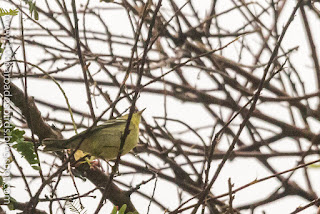On January 8th while birding at Inch Marlow in the southern parish of Christ Church I recorded my first banded bird for the year, a Sanderling tagged with a dark green band labeled CVE. I saw this bird once before in 2015 on the other side of the island at Six Men’s Bay St. Peter (read). Of course I registered the sighting at www.bandbird.org.
Here are the previous sightings to date:
Captures:
5/22/2015 - Villas Beaches, New Jersey, United States Resightings:
5/26/2015 - Fortescue - Raybins Beach, New Jersey, United States
5/29/2015 - Fortescue - Raybins Beach, New Jersey, United States
8/24/2015 - North Brigantine Natural Area, New Jersey, United States
5/22/2015 - Villas Beaches, New Jersey, United States Resightings:
5/26/2015 - Fortescue - Raybins Beach, New Jersey, United States
5/29/2015 - Fortescue - Raybins Beach, New Jersey, United States
8/24/2015 - North Brigantine Natural Area, New Jersey, United States
10/24/2015 - Six Men’s Bay, St. Peter, Barbados
5/25/2016 - Cooks Beach - north, New Jersey, United States
8/11/2016 - Avalon, New Jersey, United States
8/16/2016 - Avalon, New Jersey, United States
9/22/2016 - Avalon, New Jersey, United States
9/26/2016 - Avalon, New Jersey, United States
10/4/2016 - Avalon, New Jersey, United States
9/28/2017 - Stone Harbor - near 120th St. beach, New Jersey, United States
5/25/2016 - Cooks Beach - north, New Jersey, United States
8/11/2016 - Avalon, New Jersey, United States
8/16/2016 - Avalon, New Jersey, United States
9/22/2016 - Avalon, New Jersey, United States
9/26/2016 - Avalon, New Jersey, United States
10/4/2016 - Avalon, New Jersey, United States
9/28/2017 - Stone Harbor - near 120th St. beach, New Jersey, United States
11/2/2017 - Avalon, New Jersey, United States
11/6/2017 - Avalon, New Jersey, United States
11/7/2017 - Avalon, New Jersey, United States
1/8/2018 - Inch Marlow, Christ Church, Barbados
11/6/2017 - Avalon, New Jersey, United States
11/7/2017 - Avalon, New Jersey, United States
1/8/2018 - Inch Marlow, Christ Church, Barbados










